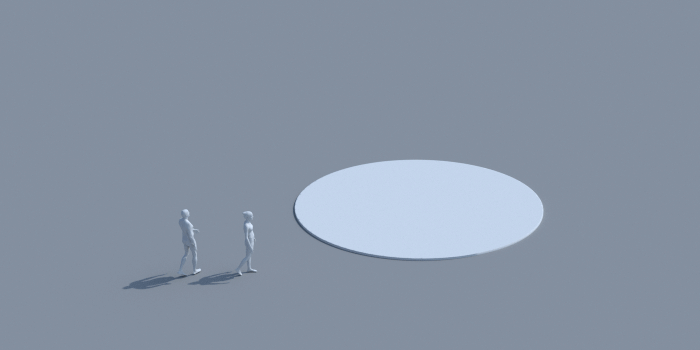You may have read the title of this story and thought to yourself, “4D Printing? I’m only just starting to understand what 3D printing is all about.” Well, if you are a regular reader of our site than you likely have at least heard of 4D printing before. Nervous System, a design studio founded in 2007 by Jessica Rosenkrantz and Jesse Louis-Rosenberg and based in Somerville, MA, is leading the way in this incredibly interesting field.
If you recall, back in December, after teaming with Shapeways, Nervous System unveiled an incredibly intricate 4D printed dress based on a system they call Kinematics. The dress was able to be printed in a single piece at approximately 15% of the actual dress’ size. This was enabled by a design which featured 2,279 triangular panels, connected by 3,316 hinges, allowing it to be ![]() condensed on the build platform and then expanded into the actual shape of the dress once completely fabricated.
condensed on the build platform and then expanded into the actual shape of the dress once completely fabricated.
This Kinematics dress is only the start of what Nervous System feels will be the bright future of 4D printing. In fact they have already made available all sorts of 4D printed items, and now are turning their attention to the possibilities that the technology could hold within large-scale adaptive structures.
 We have all seen flowers bloom over time. Each species of flower may start out with a similar shape as a bud full of petals. As the flower blooms, however, the petals change shape and the bud opens up. For instance with an Asiatic lily, when the flower begins to bloom, the cells expand within each petal. What gives the Asiatic lily its unique shape is that the cells on the rim of each petal expand to a greater degree than those in the middle of that same petal. This gives the flower a ruffled look.
We have all seen flowers bloom over time. Each species of flower may start out with a similar shape as a bud full of petals. As the flower blooms, however, the petals change shape and the bud opens up. For instance with an Asiatic lily, when the flower begins to bloom, the cells expand within each petal. What gives the Asiatic lily its unique shape is that the cells on the rim of each petal expand to a greater degree than those in the middle of that same petal. This gives the flower a ruffled look.
The designers at Nervous System have looked towards these flowers and thought to themselves, what if it was possible to use the same concept seen within the blooming flower to create a 4D printed material on a much larger scale? In doing so, they’ve envisioned a future where a large flat structure, almost like a carpet, could be placed outdoors in an area where people commonly congregate, perhaps a park or a concert venue. This flat structure would be printed with multiple materials, all which have varying properties.
For instance, as seen in the lily, the outer edges of the structure, which they call the ‘Anthesis Pavilion,’ could be printed with a material  which rapidly expands when introduced to water. At the same time, the interior of the carpet-like structure could be printed with a material which expands much less rapidly when introduced to water. When the sun is out and shining, the structure remains flat, allowing people to walk over it like they would a parking lot or carpet. If it starts to rain, the various areas of the structure would expand at different rates, and turn into a pavilion for those same people who had walked on top of it minutes before, providing them with shelter. When the rain stops, the structure would slowly dry and return to its original flat form.
which rapidly expands when introduced to water. At the same time, the interior of the carpet-like structure could be printed with a material which expands much less rapidly when introduced to water. When the sun is out and shining, the structure remains flat, allowing people to walk over it like they would a parking lot or carpet. If it starts to rain, the various areas of the structure would expand at different rates, and turn into a pavilion for those same people who had walked on top of it minutes before, providing them with shelter. When the rain stops, the structure would slowly dry and return to its original flat form.
Depending on where the various materials are printed within the structure, and how those materials adapt to varying environmental elements, all sorts of applications could eventually be realized. We could soon be living in a world filled with objects which are printed relatively affordably and adapt to our needs on the fly.
Let’s hear your thoughts on this concept and how else such technology could be put to use. Discuss in the Nervous System 4D Printing forum thread on 3DPB.com.
Subscribe to Our Email Newsletter
Stay up-to-date on all the latest news from the 3D printing industry and receive information and offers from third party vendors.
Print Services
Upload your 3D Models and get them printed quickly and efficiently.
You May Also Like
Creality To Go Public
Creality is one of the largest 3D printing companies in the world. It probably ships more 3D Printers than anyone else. In a competitive market, the company has gone from...
Why Align Technology’s Slowdown Still Matters to 3D Printing
Align Technology (Nasdaq: ALGN), the company behind Invisalign clear aligners, reported lower-than-expected results for the second quarter of 2025. While the slowdown is tied to broader economic and dental industry...
Zhejiang University Researchers Potentially Develop Sustainable Closed Loop Resins
Zhejiang University researchers have come up with a thrilling discovery that could make resins much more sustainable. In a paper for Science, “Circular 3D printing of high-performance photopolymers through dissociative...
Carlsmed to Go Public in $101 Million Bid to Scale 3D Printed Spine Implants
Carlsmed is preparing to go public. The med-tech company, based in Carlsbad, California, plans to offer 6.7 million shares at a price range of $14 to $16 per share, which...






























